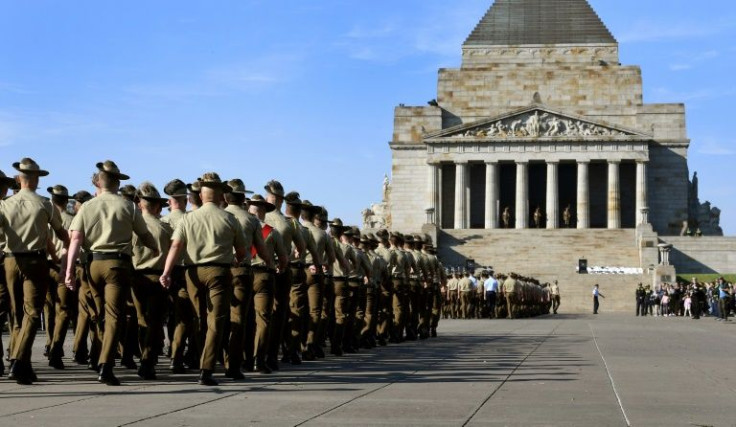What Is Anzac Day? Date, Meaning And Traditions
KEY POINTS
- Anzac Day is named after the Australian and New Zealand Army Corps, or ANZAC
- The all-volunteer force first saw action in the failed Gallipoli campaign of World War I
- Anzac Day has become a day of commemoration of Australia's and New Zealand's respective armed forces
Monday marks the 106th celebration of Anzac Day, the national day in Australia and New Zealand that commemorates the contributions of the countries' soldiers in wars and war-like times.
Anzac Day, held on every April 25, is named after the Australian and New Zealand Army Corps, or ANZAC, which was formed in World War I.
The all-volunteer combined force first saw action in the 1915 Gallipoli campaign that sought to take control of the Dardanelles Strait and modern-day Istanbul from the Ottoman Empire, then allied with the Central Powers that fought against Britain and France.
At least 20,000 Australian and New Zealand soldiers participated in the campaign, but Allied troops, including ANZAC forces, were withdrawn by December of that year as the Allies were unable to achieve their objectives, according to National Today.
Around 8,700 Australians and 2,779 New Zealanders died in Gallipoli, the New Zealand government said.
ANZAC was disbanded in 1916 following the Gallipoli campaign, but new formations were soon created, and they ended up being deployed in France as well as in the Middle East over the course of the first World War.
The corps was re-established in World War II, and similar battalions were also created during other conflicts such as the Vietnam War.
Despite its failure, the Gallipoli campaign would help create national identities for both Australia and New Zealand, The Telegraph reported.
The first Anzac Day observed on Oct. 13, 1915, was more of a patriotic holiday that aimed to raise awareness of the ANZAC forces' efforts and to raise funds, but it has since become a day that commemorates victims of war and honors Australia's and New Zealand's respective armed forces.
The so-called “Anzac biscuits” that the corps’ members originally ate during World War I have turned into a stable food and souvenir.
Anzac Day remembrance now takes two forms: the commemorative services held at dawn, and the marches that include ex-service members, according to the Australian Army's website.
An introduction, hymn, prayer, an address, laying of wreaths, a recitation, the Last Post, a period of silence, either the Rouse or the Reveille, and the national anthem are among the features included in a typical Anzac Day ceremony.
People also traditionally wear rosemary as the herb is found growing wild on the Gallipoli peninsula.
Those who wish to observe Anzac Day may attend a dawn service, visit a war memorial or even plan a trip to Gallipoli to visit the battlefield sites ANZAC forces fought in.

© Copyright IBTimes 2024. All rights reserved.





















